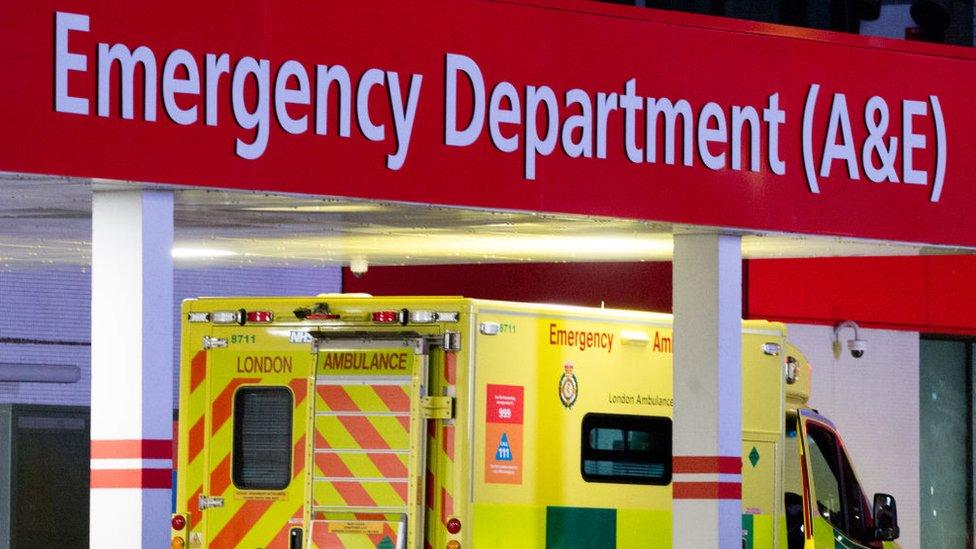Alcohol fuels rise in assaults on over 50s, study suggests
- Published

The number of people in their 50s and 60s needing emergency hospital treatment after being assaulted is at its highest level for nine years.
Nearly 21,000 people aged over 51 went to A&E in England and Wales in 2019 for violence-related injuries, according to analysis by Cardiff University.
Researchers said many of the incidents were fuelled by alcohol.
It comes as overall violence-related casualty admissions fell by 6%, the steepest decline since 2015.
The figures are based on an annual survey of 111 A&E departments, minor injury centres and walk-in units that has been conducted since 2002.
Last year, an estimated 175,764 people attended the emergency NHS facilities with injuries sustained in violence, 11,820 fewer than the previous year.
Most of the victims had been hit, punched or kicked. Wounds caused by knife attacks - which separate data shows are at record levels - made up only around 5% of cases, analysts believe.
The number of violence-related emergency admissions has been dropping almost continuously since the survey began, and has now fallen by 45% since 2010.
In 2019, the greatest annual decreases were among those most at risk of being assaulted. Admissions by young adults were down 12%, and those by people aged 31-50 years fell by 9%.
But 13,798 men and 7,128 women aged 51 and over are estimated to have sustained injuries after being attacked, an 8% rise, and the second successive increase among this age group.
As a proportion of the population, the injury rate among those in their 50s and 60s is now at its highest since 2011.
The authors of the study said although this was "difficult to explain" it was likely to reflect the "growing" levels of drinking among older people in England.
And they suggested some older binge drinkers were still behaving as they did when younger, in the 1980s and 1990s.
"Current cohorts of older people exhibited higher alcohol consumption levels in the past and may be continuing their relatively higher levels into older age," the study says.
"Since heavy binge drinking, and violence associated with it, were much more frequent three or four decades ago, it seems possible that this generational trait is also reflected in slowly increasing the risk of injury in violence."
- Published9 April 2020

- Published13 February 2020

- Published23 January 2020

- Published16 January 2020
